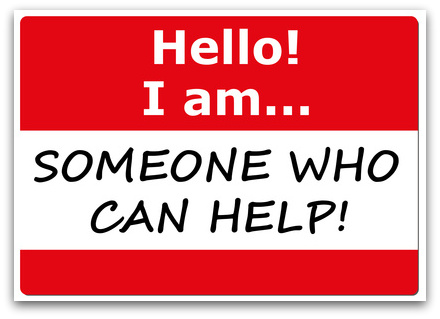How to Get More Clients by Speaking Their Language 2
In today’s guest post Latrisha Jacobs provides advice about:
How to Get More Clients by Speaking Their Language
By Latrisha D. Jacobs
So, you want more clients? Cool, so does everyone. Everyone wants to know how to get more clients. But, there’s a reason why some people easily attract their ideal clients and never have to “need” a new client and why you may be struggling to get ideal paying clients on a consistent basis. The reason is simply because you’re trying to attract clients with what you think they need to hear from you instead of what they really want to hear.
In other words, you’re using marking jargon. This means you’re using words that people in your industry would use or words that you’ve made up in your head. But, this just doesn’t work. You have to be using words that your ideal clients know and relates to them.
You will find that when you start to use your ideal clients words you’ll get better results and you’ll almost immediately start pulling your ideal clients to you. Here are 3 really quick tips to help you get started attracting more clients by speaking their language.
Tip #1: Ask Them What They Want
The best way to get your ideal clients words and language is to ask them what they want. When you do this you’re getting it straight from them and then you don’t have to guess about what they want because they’re telling exactly what they want and need. More importantly they’re telling this in their own words and you can later use these to attract them to you. This is the best kind of target market research that you can ever do in your business.
Tip #2: Talk to Them and Not At Them
Your ideal clients want to be able to relate to everything that you have to say and they don’t want to feel like you’re talking at them. You want to make them feel like they’re having a conversation with you about their problems and how they think you can help them solve them. People buy from people that they know, like and trust. So, to build this relationship you have to be conversational and approachable for your ideal clients.
Tip #3: Use Their Words Exactly
One thing you don’t want to do is take the words and phrases that your ideal clients give you and turn it around into what you think it should be saying. The funny thing is that when it comes to this work you actually loose points for being creative. You want to use the exact words that your ideal clients give you. The reason is because they are giving you the exact words and phrases that describe their problem and that they can readily identify with these words. It hits their hot buttons because they gave you the words.
Your Assignment:
Go talk to 5-10 of your ideal clients and ask them what they want. Record it if you can and make sure to capture everything that they’re saying directly. Take note of exactly what they’re saying and where they show the most pain. These pain points will become your hot buttons that you’ll use in your marketing and sales copy.
About Latrisha Jacobs
 Latrisha Jacobs, The Niche Breakthrough Specialist, works with service based change agents who lead with their heart first and who want to build big businesses and make an even bigger difference but they struggle with getting people to get what they do and want to invest in working with them and who would like to get more clarity, clients, and cash in 60 days or less.
Latrisha Jacobs, The Niche Breakthrough Specialist, works with service based change agents who lead with their heart first and who want to build big businesses and make an even bigger difference but they struggle with getting people to get what they do and want to invest in working with them and who would like to get more clarity, clients, and cash in 60 days or less.
She uses her Discover Your Thing System and book From Start Up to Success to lead seminars, groups, workshops, and retreats to teach new entrepreneurs how to use their business to make a difference.
Connect with Latrisha on Facebook (http://www.facebook.com/latrishajacobsfans) or Twitter (http://www.twitter.com/latrishajacobs).
Article Source: How to Get More Clients by Speaking Their Language

 Ben Morton is a Leadership Consultant at
Ben Morton is a Leadership Consultant at 







 As a business coach and mentor, author, speaker, and firewalk instructor, Karen Williams, from Self Discovery Coaching, works with coaches and solopreneurs who are breaking free from the corporate world and want to create a successful business. She helps them to develop the foundations for a successful business, stand out from the crowd and enjoy every step of the way.
As a business coach and mentor, author, speaker, and firewalk instructor, Karen Williams, from Self Discovery Coaching, works with coaches and solopreneurs who are breaking free from the corporate world and want to create a successful business. She helps them to develop the foundations for a successful business, stand out from the crowd and enjoy every step of the way.